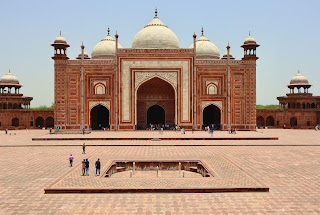Fatehpur Sikri: Exploring India's Forgotten City of Splendor, Uttar Pradesh agra India
Fatehpur Sikri: A Journey Through Time
Nestled on the outskirts of Agra, amidst the arid plains of Uttar Pradesh, lies a forgotten city frozen in time – Fatehpur Sikri. Once the capital of the Mughal Empire, this UNESCO World Heritage Site offers a mesmerizing glimpse into India's rich cultural and architectural heritage. Join us as we embark on a journey to unravel the mysteries and marvels of Fatehpur Sikri.
The Rise and Fall of an Empire
Commissioned by Emperor Akbar in the late 16th century, Fatehpur Sikri was envisioned as a grand imperial capital that would rival the splendor of Delhi. Built with red sandstone and adorned with intricate carvings, the city was a testament to Akbar's vision of religious tolerance, cultural synthesis, and architectural innovation. However, Fatehpur Sikri's glory was short-lived, as it was abandoned after just a few decades due to water shortages and political instability.
Architectural MarvelsDespite its brief existence, Fatehpur Sikri boasts an impressive array of architectural wonders that continue to captivate visitors to this day. The Jama Masjid, with its towering minarets and elegant domes, remains one of the largest mosques in India and a masterpiece of Mughal architecture. The Buland Darwaza, or "Gate of Magnificence," is another iconic structure that greets visitors upon their arrival in Fatehpur Sikri, symbolizing the victory of Emperor Akbar over Gujarat.
The Spiritual Center of Salim Chishti
At the heart of Fatehpur Sikri lies the exquisite white marble tomb of the revered Sufi saint, Sheikh Salim Chishti. Pilgrims from far and wide flock to this sacred shrine to seek blessings for health, happiness, and prosperity. The delicate marble lattice work and intricate marble inlays of Salim Chishti's tomb are a testament to the skill and craftsmanship of Mughal artisans.
Exploring the Royal Complex
The royal complex of Fatehpur Sikri is a labyrinth of palaces, courtyards, and pavilions that offer a glimpse into the opulent lifestyle of the Mughal emperors. The Diwan-i-Khas, or "Hall of Private Audience," is where Akbar held meetings with his courtiers and discussed matters of state. The Panch Mahal, an imposing five-story structure, served as a pleasure palace for the emperor and his family, offering panoramic views of the surrounding countryside.
Preserving the Legacy
Today, Fatehpur Sikri stands as a testament to India's rich cultural heritage and architectural legacy. Efforts are underway to preserve and protect this historic site for future generations, ensuring that its beauty and significance endure for centuries to come. Visitors from around the world continue to be enchanted by the timeless charm and mystique of Fatehpur Sikri, making it a must-visit destination for history enthusiasts and culture lovers alike.
Conclusion: A Journey of Discovery
As we conclude our journey through Fatehpur Sikri, we're left with a profound appreciation for its architectural splendor, spiritual significance, and historical importance. From the grandeur of its imperial palaces to the tranquility of its sacred shrines, Fatehpur Sikri offers a unique window into India's glorious past and vibrant present. So come, step back in time, and explore the timeless wonders of Fatehpur Sikri – a journey you'll never forget.



.jpg)

Comments
Post a Comment